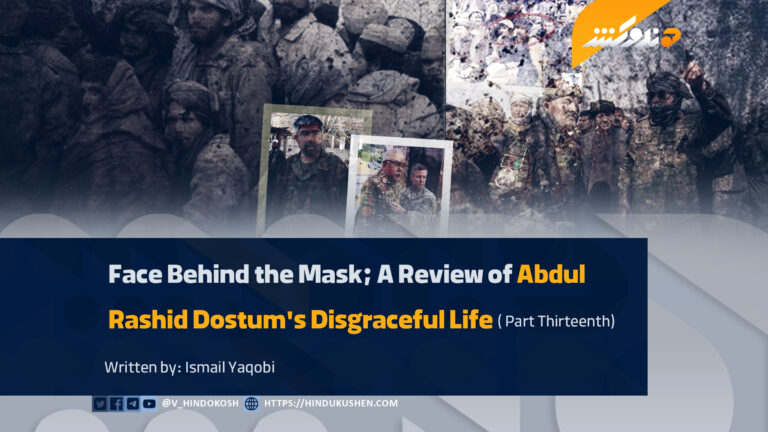Part Thirteenth
Written by: Ismail Yaqobi
The statistics regarding the seizure of land and private and government property by Dostum and his gang are so numerous that even with a more extensive investigation, they cannot be compiled into a single book, let alone one or two sections of this series of articles we are about to present.
Continuing from the previous section, in this part we will also look at a corner of the statistics on lands and properties that were seized by the sham marshal of the republican regime, his co-religionists, and his mercenaries, and added to the list of other thefts by this infamous figure in the contemporary history of Afghanistan.
In addition to the matters mentioned in the previous part, despite all the corruption present in the then government apparatus, the seizure of land by the Junbish party led by Dostum in northern Afghanistan (Sar-e Pol, Faryab, Jawzjan) from 2010 to 2013 was documented on a wider and larger scale by the Afghan parliament’s oversight commission.
In this case, the Junbish Party was accused of widespread seizure of state and private lands, including the seizure of over 500 acres in rural areas for the construction of residential settlements to house Dostum’s forces – the same forces that, under Dostum’s command, brought nothing but benefit to their masters and harm and loss to the suffering people of Afghanistan.
Another key issue was the seizure of Ministry of Defense land in Balkh and Faryab from 2007 to 2015, when the Junbish forces seized over 90,000 acres of Ministry of Defense land, including 400 acres in Balkh to build settlements for Dostum’s supporters. The main victims of these cases were mostly local peasants and about 200 other families who were displaced.
These land grabs sometimes led to armed conflict and disputes between warlords, especially between Dostum and Atta Mohammad Noor, whose bitter shadows loomed over the northern provinces of the country. Between 2013 and 2019, numerous conflicts occurred between Noor’s people and Nizamuddin Qaisari, a former ally of Dostum, over 390 acres of land.
In addition to casualties on both sides, these conflicts also resulted in numerous casualties among innocent civilians, leading to the martyrdom of fellow citizens and the displacement of many families. These were people who had no role in the disputes between these warlords, but due to these conflicts, they were forced to migrate to other cities in the worst economic and social conditions to secure their own and their families’ safety and livelihoods.
In 2016, Dostum’s mercenaries, under the name of Junbish forces, seized agricultural lands for military bases in Jawzjan and Ghormach districts of Faryab province, expelling local farmers by force, under the pretext of fighting the Taliban movement; more than 30 local families were victims of this seizure.
Accordingly, the 2023 reports of the Land Reclamation Commission placed Abdul Rashid Dostum at the top of the list of major public property grabbers. The report states that dozens of cases of state and private land seizures in the northern provinces were carried out under his direct order and by individuals affiliated with the Junbish party.
In conclusion, it must be said that the case of Dostum and his people’s land grab is part of the dark face of corruption in Afghanistan over the past two decades. The man who once called himself the “defender of the people of the north” is today known as a symbol of power-seeking and the plundering of public assets.
Note: The articles, essays, and comments published by the Voice of Hindukush only reflect the views of the authors & writers and do not necessarily represent the agreement of the Voice of Hindukush.




